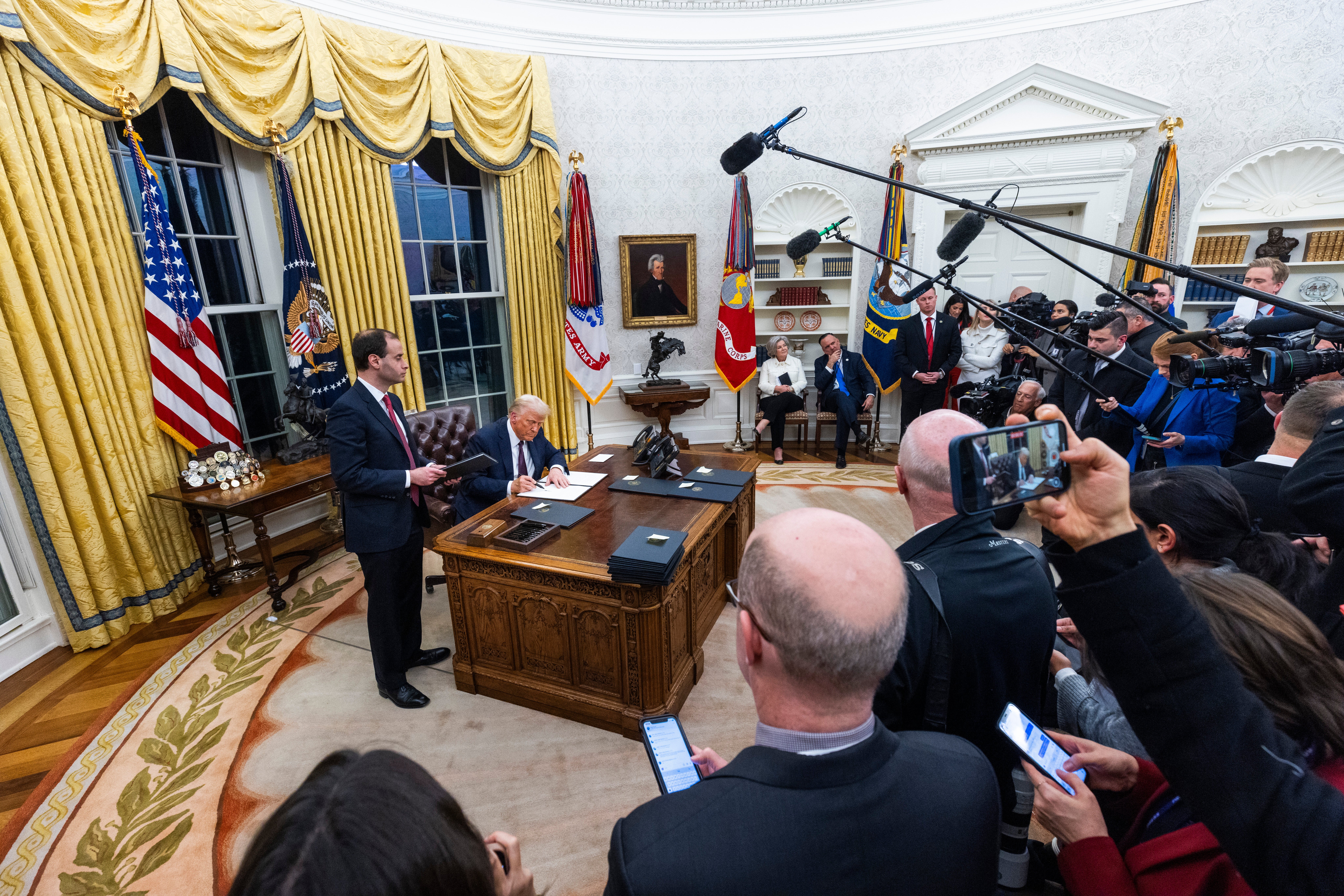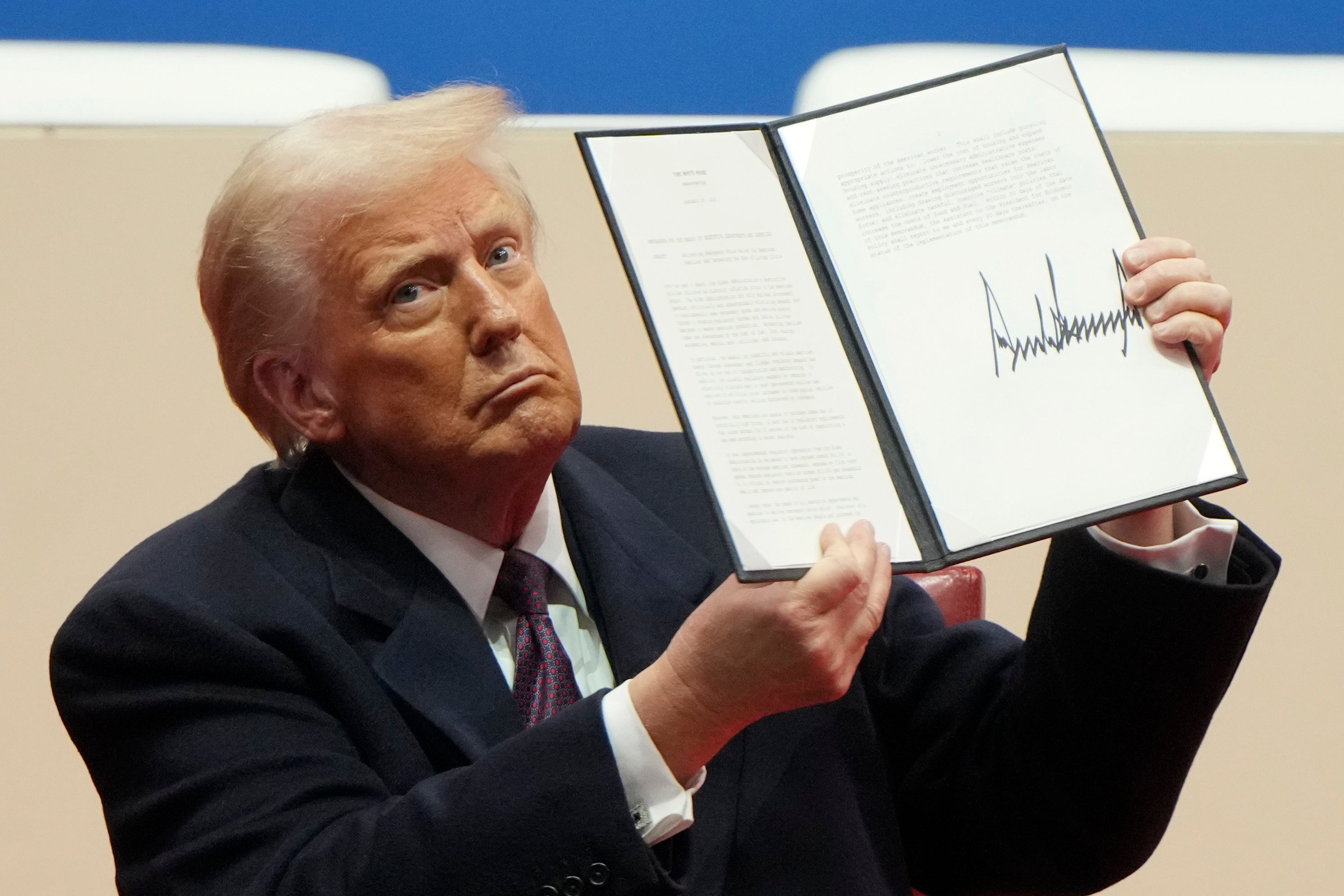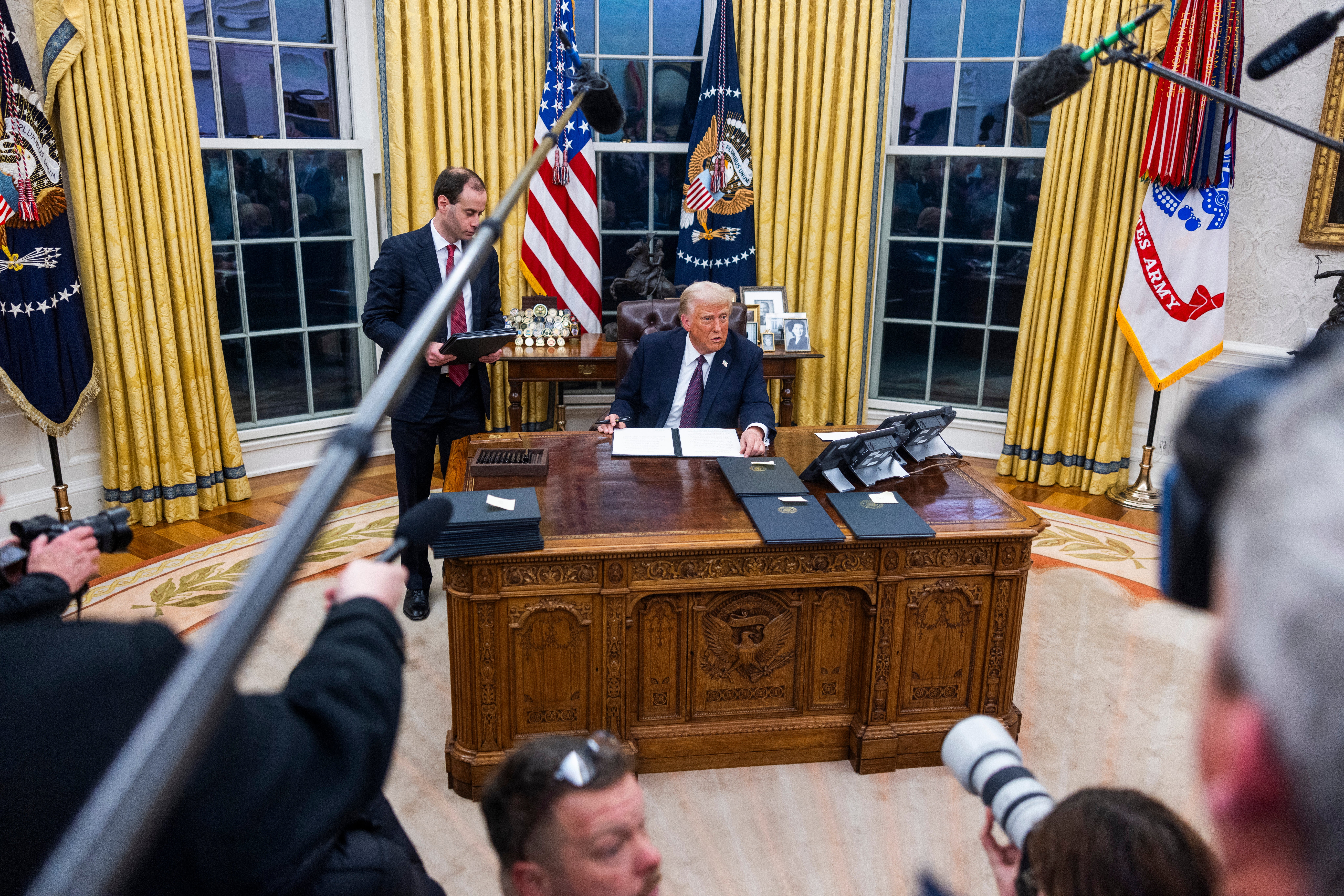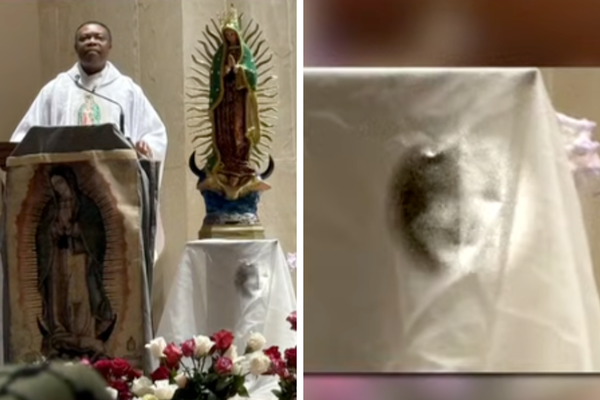
With a stroke of a giant Sharpie, Donald Trump on Monday began the work of systematically dismantling anything and everything that his predecessor built over the previous four years — and he turned it into reality TV.
First, during a raucous indoor parade that looked more like a campaign rally than an inaugural celebration, then during a marathon signing session with media in the Oval Office, Trump issued a series of executive orders and presidential proclamations that were meant to repeal and repudiate everything that transpired between January 20, 2021, and his White House return. He rolled back 78 separate Biden-era executive actions, including restarting the withdrawal of the United States from the Paris Climate Accords and the World Health Organization.
Trump also ordered an end to the Biden administration’s efforts to recognize transgender and nonbinary people in government documents, directed federal workers to be ordered back to the office after years of remote work, reinstated changes to the civil service system meant to make it easier for him to fire career federal employees, and pardoned or commuted the sentences of the roughly 1,500 people who’d rioted at the Capitol to prevent Biden’s swearing-in just four years earlier.
But just as striking as the breadth and depth of the orders Trump signed to nullify his predecessor’s work was the performative yet nonchalant way in which he carried out his task.

For nearly an hour, he mused on a variety of topics while engaging in a relaxed but lively back-and-forth with the pool of reporters who’d been summoned to the Oval to document the occasion, at one point pausing to ask: “Did Biden ever do a news conference like this?”
The answer, sadly, was no.
When Biden took office in 2021, his administration made a big show of restarting the daily press briefings that had become increasingly rare during much of Trump’s first term in office. At the time, Biden aides promised “the most transparent administration in American history” and contrasted themselves with the excessive secrecy of their predecessors.
It never happened. Sure, there were press briefings, but they often failed to include useful information, particularly after the departure of Jen Psaki for the greener pastures of an NBC News television contract. Getting a direct glimpse into the psyche of the leader of the free world was about as easy as dental surgery.
When Biden conducted a similar signing session in the Oval Office after his swearing-in, he only took one question after brief remarks, and that was over the shouting of his aides who tried to drown out the press pool.

This set a pattern that would continue for Biden’s entire term. Even as his staff boasted of the number of times he took reporter questions, they were always limited by press “wranglers” to short interactions. And on the rare occasions when he conducted a more formal news conference, he limited himself to a short list of pre-selected reporters whose questions would be easily predictable.
After Biden’s disastrous debate against Trump, it became easy to buy that his team was shielding him from the press because he was simply too old to engage coherently with reporters without extensive preparation. But despite his many public gaffes — and though he was not the same man he’d been when he entered office four years earlier — Biden was not the senile creature his detractors routinely accused him of being.
Instead, he and his brain trust entered office lacking a key core competency: An understanding of the modern media environment.
In the early days of his term, multiple White House aides characterized the protective bubble they built around him as both a function of the then-current Covid-19 pandemic and their calculation that Americans, by electing him to replace Trump, wanted a presidency with a smaller footprint in their collective consciousness.
The best media minds in the Democratic establishment were convinced that by quietly going about the business of governing, they could convince Americans of their competence and consign Trump to political oblivion.

So convinced were they of the soundness of their strategy that they made absolutely no effort to push Congress to enact reforms that might have prevented a future president — Trump or anyone else — from taking many of the actions he took on Monday to erode the protections enjoyed by career civil servants for more than a century.
The incompetence on display was staggering.
What they did not understand — and refused to learn — was that in an age when every American has a screen in their pocket that delivers the news in 30-second segments curated by algorithm, the performative aspects of the presidency — the press conferences, the Oval Office set pieces, the use of the bully pulpit — matter as much if not more than the substance.
By not taking questions, by avoiding unscripted settings, Biden and his team created a vacuum that the GOP messaging machine quickly filled with brutally negative commentary and an unyielding narrative about Biden’s fitness for office. They were so naive that it didn’t occur to anyone that the persistent shuffle that Biden developed after breaking his foot in late 2020 was something that would be easily exploited and needed to be nipped in the bud early on.
But worse yet, being shielded from rapid-fire questions from the public kept him from having the mental muscle memory needed to debate successfully, leading in part to the awful debate performance that validated all of the Republican accusations of senility and led to his exit from the 2024 race.
Trump may be shameless about his love for the spotlight — and his penchant for running the country like a TV show. The orders he signed on Monday may do far more harm than good. But for better or worse, he understands what the previous administration never figured out: Perception is reality.







